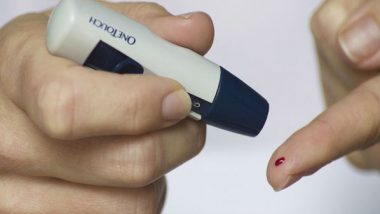Washington DC, June 9: A recent study has found how exosomes, tiny nanoparticles released from fat cells, travel through the bloodstream and can help detect type 2 diabetes in teens. The study was discussed in an annual meeting - ADA 2019. The exosomes are important in lean, healthy individuals in maintaining homeostasis, but when fat gets 'sick' - the most common reason for this is too much weight gain - it can change its phenotype, becoming inflammatory, and disrupts how our organs function, from how our skeletal muscle and liver metabolize sugar to how our blood vessels process cholesterol. Can Sunbathing Reduce Type 2 Diabetes Risk? Study Finds Link Between Sunlight and Insulin Sensitivity.
The researchers were curious about what this process looked like in teens who fell in the mid-range of obesity. Obesity is a major risk factor for insulin resistance and type 2 diabetes, but the researchers wanted to know why do some teens with obesity develop type 2 diabetes over others? Why are some teens in this mid-range of obesity metabolically healthy while others have metabolic syndrome? Can fat in obese people become sick and drive disease?The theory was tested with 55 obese adolescents, ages 12 to 17, as part of a study at Children's National.
The participants - 32 obese normoglycemic youth and 23 obese hyperglycemic youth - were similar in age, sex, race, pubertal stage, body mass index and overall fat mass. The distinguishing factor: the hyperglycemic study participants, the teens with elevated blood sugar, differed in where they stored fat. They had extra visceral fat (or adipose tissue) storage, the type of fat that surrounds the liver, pancreas and intestines, a known risk factor for type 2 diabetes.
The researchers predicted that circulating exosomes from teens with elevated blood sugar are enriched for microRNAs targeting carbohydrate metabolism.For the study, the researchers used three tests to examine study participants' metabolism, body composition and circulating exosomes. Advantages of Nude Sun-Bathing: Research Says the Benefits Are More Than Just Vitamin D.
The first test, an oral glucose tolerance test, measures how efficiently the body metabolizes sugar; the second test is the whole body DXA, or dual-energy x-ray absorptiometry, which analyzes body composition, including lean tissue, fat mass and bone mineral density; and the third test, the serum adipocyte-derived exosomal microRNA assays, is an analysis of circulating fat signals in the bloodstream.
The study found that teens with elevated blood sugar and increased visceral fat had different circulating adipocyte-derived exosomes.Dr Freishtat, one of the researchers, imagines that this information will be especially helpful for a patient in a mid-range of obesity. In the current study, the altered RNAs affect P13K/AKT and STAT3 signalling, vital pathways for metabolic and immune function.
"Instead of waiting until someone has the biochemical changes associated with type 2 diabetes, such as hyperglycemia, hyperlipidemia and insulin resistance, we're hoping physicians will use this information to work with patients earlier," says Dr Freishtat.He went on to say, "Through earlier detection, clinicians can intervene when fat shows sign of illness, as opposed to when the overt disease has occurred. This could be intervening with diet and lifestyle for an obese individual or intervening with medication earlier.
The goal is to work with children and teens when their system is more plastic and responds better to intervention.""It's important for families to know that these studies are designed to help researchers and doctors better understand the development of disease in its earliest stages, but there's no need for patients to wait for the completion of our studies," he added."Reaching and maintaining healthy body weight and exercising are important things teens and families can do today to reduce their risk of obesity and diabetes."













 Quickly
Quickly












